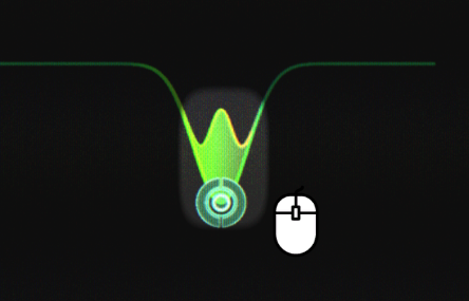
03 Feb Gamification of Quantum Optimal Control
Shaeema Zaman Ahmed
If you like games, have you ever wondered about the potential of gamification in quantum physics research? Let me take you through an interesting story where a game has opened up a new way to do research in quantum physics.
Together with our research team at ScienceAtHome, Aarhus University I have been working on a game called Quantum Moves 2, a game based on simulation of real atoms!

The challenge is transferring atoms in the best possible way from a specified initial state to a desired target state within very short timescales (sub-milliseconds) in a quantum laboratory. In the world of quantum physics, this is a complex task called quantum optimal control.
The idea of the game is quite simple: in every game-play, the mouse movements simulate the movement of laser beams or other components of an experimental setup used in quantum labs to control and transfer atoms. Every game-play creates a solution, which appears as data describing how well the atom was controlled.

The basic idea is to find how to control atoms in the most optimal way such that we can use them to make quantum computers or quantum sensors. When scientists try to solve this research problem, they must use their intuition to make some guesses about what comprises a good solution. Finding these good guesses can be often complicated, and it has been seen that many computer algorithms also struggle to find these good guesses. Therefore, we asked could many people collectively find these good guesses.
To understand the complexity of finding these good guesses, just imagine you have been given the task of finding the highest mountain peak in a highly rugged landscape. However, there is a twist – you are blindfolded! You cannot see the highest peak and one of the ways could be starting from a point and simply walking to explore the landscape. In order to find the highest peak, you would walk towards the direction where the landscape is becoming steeper. Since it is a rugged landscape, there could be multiple peaks but you have to find the highest peak. This essentially means that you may hike around a bit to get at least the general lay of the rugged landscape before walking towards what seems to be the tallest peak. Therefore, there exists a compromise between searching for other, taller peaks and climbing to the top of the nearest peak. With this problem at hand, the research team at ScienceAtHome, Aarhus University asked this question to themselves – What if games could solve this problem. By playing games, can many people collectively find good guesses and find the highest peak?
The scientific challenge of finding good ways to control an atom has been put into a real game –Quantum Moves 2!

When players play the game, we have seen that they have come up with many good guesses that can be optimized to find good solutions. A computer also in principle could find these good solutions
but would require a lot more trials and computational resources.
In a nutshell, the guiding principle of Quantum Moves 2 is to open up the toolbox
of research and involve players in the scientific challenge of quantum optimal control. This allows harnessing human problem-solving skills to provide solutions to complex quantum physics problems. The hope is that they will creatively explore and climb the rugged landscape and find the highest peak – the global optimum solution of a quantum control problem!


